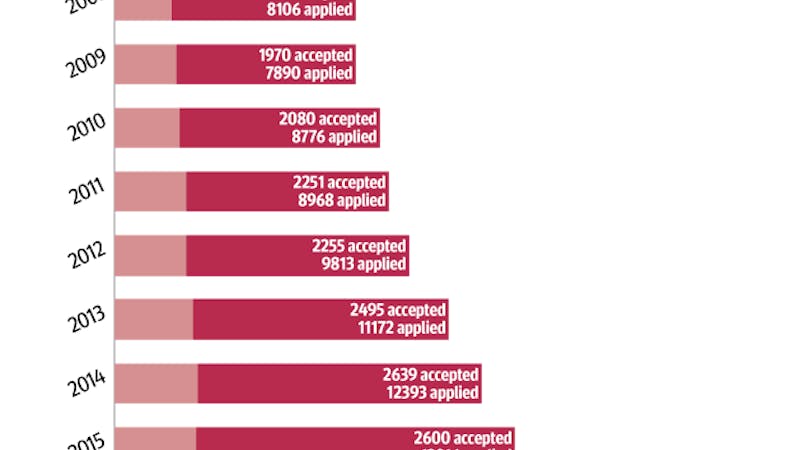
Admission rate decreases slightly for Class of 2019
Rice University acceptance letters have been distributed and the campus is gearing up for the roughly 2,600 students invited for Owl Days. For the Class of 2019, there were 17,900 applications, and Rice admitted around 14.7 percent, according to Chris Munoz, vice president for enrollment.Munoz said that determining the exact admission rate is currently in preliminary stages and that the exact number of students attending Rice will not be known until May.“Why [the admittance rate] could change is related to if we elect to take anyone off the waitlist,” Munoz said.Students admitted through the regular decision process may decide before May 1 to attend a different university, and some waitlisted students may decide not to accept a Rice admission offer. Munoz said his office refers to this as the “summer melt process.”“[The admission rate] could go up higher, but again this is speculation because we don’t know of how many students we’ve admitted up to May 1 who are going to make a commitment,” Munoz said.Munoz said each year’s class to excel more than the last. “We’re attracting incredibly well-qualified students,” Munoz said. “The students who are applying to Rice, their qualifying academic records in terms of their grade performance, the rigor of the courses they’ve taken and their test scores are just breathtaking. As a future alum, you want each class behind you to be better than you were because this only raises the value of your degree.”Rice’s admission rate has decreased over the last couple of years, according to Munoz.“Our admit rate over the last eight years has gone from around 25 to 26 percent, down to a low 15 percent and that includes even the fact that we were growing,” Munoz said.Recently, Rice was listed at 29th in desirability in the 2015 Top 100 Colleges by Student Choice, a report by GradReports that considers only acceptance and enrollment, or yield, rate. Last year, Rice had a yield rate of 37.9 percent when 978 of 2,581 accepted students chose to attend.“Anytime Rice is put in favorable light … adds to increasing the perception of the quality and [desirability] of a Rice degree,” Munoz said. “However, U.S. News has the most recognition for its university rankings.” McMurtry College senior Grant Patterson said he didn’t give rankings much weight. “When I was looking at schools, I wasn’t really looking at anything besides the U.S. News rankings, and even then, I was skeptical of rankings in general,” Patterson said. “I was more concerned with visiting the school and whether I could picture myself there.”Patterson said school prestige, if not at the top, didn’t mean much.“A school is either prestigious or it’s not, and the rankings don’t really matter,” Patterson said. “Rank 17th or 10, it doesn’t really matter.”The Student Admission Council aids the Rice Admission Office in recruitment and yield events, SAC director Timothy Chang said. The SAC works to promote Rice, answer questions and help prospective students decide if Rice is the best fit for them.“SAC members serve as ambassadors for Rice both on and off campus through a variety of mediums,” Chang, a Baker College junior, said.
